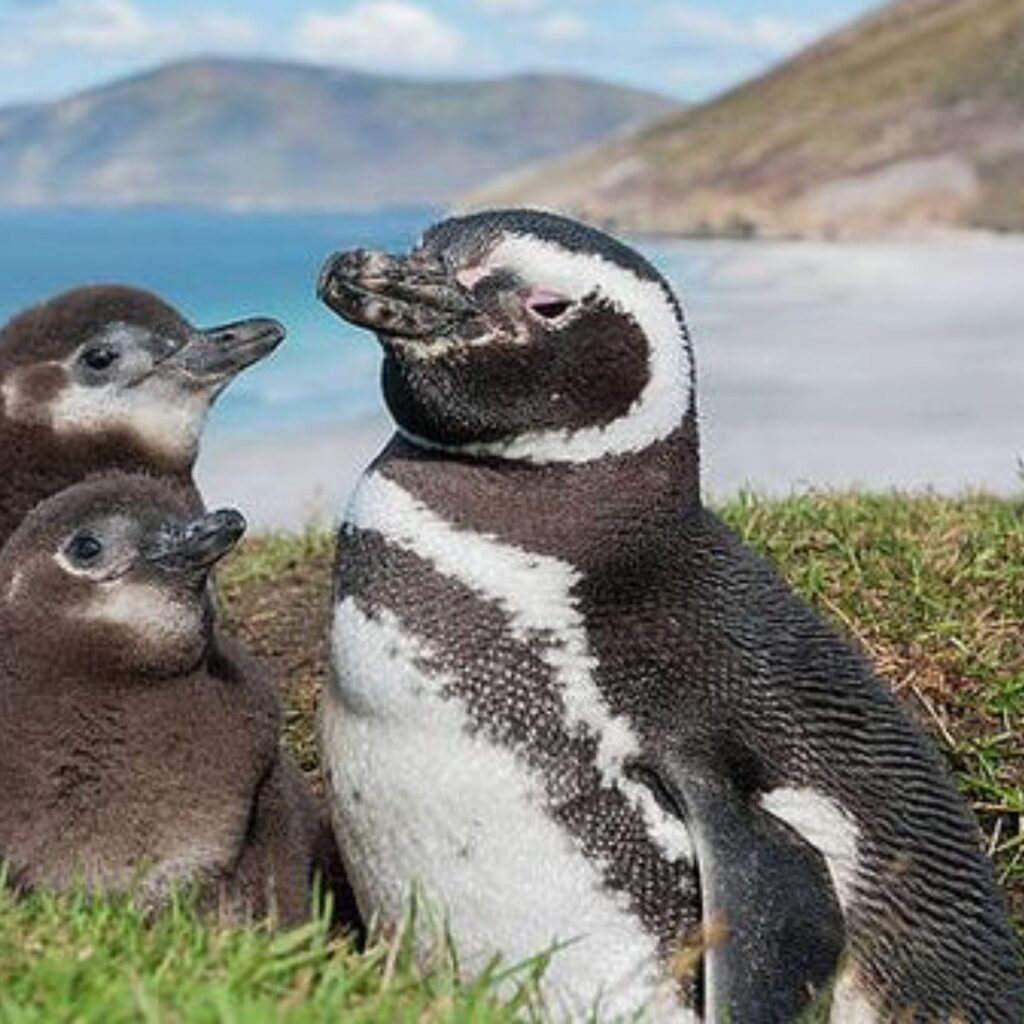
Magellanic penguins captivate us with their distinctive black and white feathers and playful nature. Many animal lovers wonder about the status of these beloved birds. So, let’s dive into the question: Is the Magellanic penguin extinct?
The Short Answer
No, the Magellanic penguin is not extinct. These charming seabirds still waddle along the coasts of South America and swim in the surrounding oceans. However, they do face challenges that affect their population.
Also Read: Humboldt Penguin vs Magellanic Penguin
Current Conservation Status
The International Union for Conservation of Nature (IUCN) classifies the Magellanic penguin as “Near Threatened.” This status means that while the species isn’t currently at high risk of extinction, it could become threatened in the near future if we don’t take action to protect them.

Population Numbers
Researchers estimate that about 1.1 to 1.6 million breeding pairs of Magellanic penguins exist in the wild. This number might sound large, but it represents a decline from previous decades. Scientists keep a close eye on these population trends to ensure the species’ survival.
Where Magellanic Penguins Live
You can find Magellanic penguins along the coasts of Chile, Argentina, and the Falkland Islands. They build their nests on these shores and venture into the cold waters of the South Atlantic and Pacific Oceans to hunt for food.
Threats to Magellanic Penguins
While not extinct, Magellanic penguins face several challenges:

1. Climate Change: Warming oceans affect the penguins’ food sources, forcing them to swim farther to find meals.
2. Oil Spills: These disasters can coat penguins’ feathers, making it hard for them to stay warm and swim properly.
3. Overfishing: When humans catch too many fish, it leaves less food for the penguins.
4. Plastic Pollution: Penguins can mistake plastic for food or become tangled in it.
5. Habitat Loss: Human activities sometimes destroy or alter the penguins’ breeding grounds.
Conservation Efforts
Many organizations work hard to protect Magellanic penguins:
1. Protected Areas: Governments create marine reserves to safeguard penguin habitats.
2. Research: Scientists study penguin behavior and population trends to better understand how to help them.
3. Oil Spill Response: Teams train to rescue and clean penguins affected by oil spills.

4. Fishing Regulations: Some areas have rules to ensure enough fish remain for penguins.
5. Education: Programs teach people about the importance of protecting penguins and their homes.
How You Can Help
Even though Magellanic penguins live far away, you can still help protect them:
1. Reduce Plastic Use: Less plastic waste means cleaner oceans for penguins.
2. Support Conservation: Donate to or volunteer with organizations that protect penguins.
3. Choose Sustainable Seafood: This helps ensure enough fish remain for penguins and other sea creatures.
4. Spread Awareness: Share what you learn about Magellanic penguins with friends and family.

5. Visit Responsibly: If you ever see penguins in the wild, follow guidelines to avoid disturbing them.
The Future of Magellanic Penguins
While Magellanic penguins face challenges, their situation is not hopeless. With continued conservation efforts and public support, these charming birds have a fighting chance. Researchers work tirelessly to monitor their population and develop new ways to protect them.
Interesting Magellanic Penguin Facts
To end on a positive note, here are some fun facts about these amazing birds:
1. Magellanic penguins can swim up to 15 miles per hour in the water.
2. They can dive as deep as 300 feet to catch fish.
3. These penguins often mate for life and return to the same nesting site each year.

4. Baby Magellanic penguins are called chicks and are covered in soft, downy feathers.
5. Adult penguins molt once a year, replacing all their feathers at once.
Also Read: 10 Fun Facts About Magellanic Penguins
Determination
Magellanic penguins are not extinct, but they do need our help to thrive. By understanding the challenges they face and taking steps to protect them, we can ensure that future generations will also get to enjoy the sight of these wonderful seabirds waddling along the South American coasts. Remember, every small action to protect our environment can make a big difference for creatures like the Magellanic penguin.
Pingback: 17 Unique Water Birds of Oklahoma